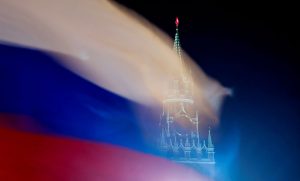LONDON – Russia has doubled its 2023 defense spending target to more than $100 billion – a third of all public expenditure – a government document reviewed by Reuters showed, as the costs of the war in Ukraine spiral and place growing strain on Moscow’s finances.
The figures shed light on Russia’s spending on the conflict at a time when sector-specific budget expenditure data is no longer published.
They show that in the first half of 2023 alone, Russia spent 12%, or 600 billion roubles, more on defense than the 4.98 trillion roubles ($54 billion) it had originally targeted for 2023.
Defense spending in the first six months of 2023 amounted to 5.59 trillion roubles, 37.3% of a total 14.97 trillion roubles spent in the period, the document showed. Russia’s budget plan envisages 17.1% of total funds spent on “National Defense”.
Russia’s government and finance ministry did not respond to requests for comment on the numbers.
Rising war costs are supporting Russia’s modest economic recovery this year with higher industrial production, but have already pushed budget finances to a deficit of around $28 billion – a figure compounded by falling export revenues.
Higher spending on defense, as Moscow prosecutes what it calls a “special military operation” in Ukraine, could widen the deficit further, while the boost in output could cannibalize other sectors and crowd out private investment.
Reuters calculations based on the document showed that Russia had spent 19.2% on defense in the first six months of all initially planned budget expenditure for 2023 as a whole.
The last publicly available data showed Moscow had spent 2 trillion roubles on the military in January and February.
In the first half of this year, budget expenditure was 2.44 trillion roubles higher than the same period of 2022. Based on the document, 97.1% of that extra sum was directed to the defense sector.
The document provided a new estimate for annual defense spending of 9.7 trillion roubles, one third of the total spending target of 29.05 trillion roubles, which would be the highest share in at least the last decade.
Between 2011 and 2022, Russia spent a minimum of 13.9% and a maximum 23% of its budget on defense.
Russia has already spent 57.4% of its new annual defense budget, the document showed.
FULL CAPACITY?
Military production has driven a strong recovery in industrial output, and analysts say that state defense contracts have been a key driver in Russia’s economic recovery to GDP growth so far this year from a 2.1% contraction in 2022.
Specific defense funding falls under closed expenditures, but some data, though no longer public, is circulated. For example, the document shows that Russia spent almost 1 trillion roubles on military salaries in the first half, 543 billion roubles more than in the same period last year.
Deputy Prime Minister Denis Manturov said in July that the defense industry was now producing more munitions each month than it did in the whole of 2022.
Funding for schools, hospitals and roads was already being squeezed this year in favor of defense and security, but as the share of defense spending grows, other areas could face cuts.
“The military industrial complex is enabling industrial growth, ‘civilian’ industries are slowing down again,” said Dmitry Polevoy, head of investment at Locko-Invest, after last week’s industrial output data for June.
That showed a 6.5% year-on-year increase, largely thanks to last year’s low base effect. When excluding seasonal production, growth stopped altogether.
CentroCreditBank economist Yevgeny Suvorov said the military industry was running at full capacity.
“We don’t know what the potential for a further increase in the output of tanks and missiles is,” Suvorov said on his MMI Telegram channel.
“But we know that increasing this output even further is possible only at the expense of haemorrhaging more staff from other sectors of the economy.”
Net exporter Russia typically posts budget surpluses, but will post a deficit for the second year running, with the value of energy exports down 47% year-on-year in the first half.
Higher budget spending adds to inflation risks. The central bank hiked rates to 8.5% in July and analysts expect the cost of borrowing to rise further.
The Bank of Russia forecasts GDP growth at 1.5%-2.5% this year, in line with analysts polled by Reuters last week. The International Monetary Fund in April forecast 0.7% growth this year, but with global isolation to dampen Russia’s prospects for years to come.
“Abundant fiscal ‘steroids’ are helping fairly well for now, but are hardly improving the economy’s medium- or long-term position,” said Polevoy.
“As soon as fiscal consolidation becomes unavoidable, there will be a rapid economic slowdown.” — Reuters

